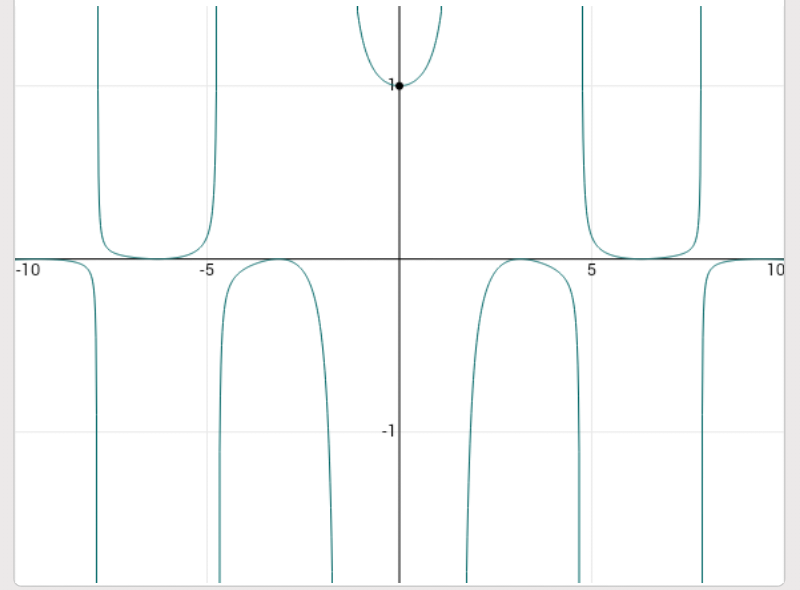Limits And The Greatest Integer Function
x → 0 lim ⌊ x 2 ( sin x ) ( tan x ) ⌋ = ?
This section requires Javascript.
You are seeing this because something didn't load right. We suggest you, (a) try
refreshing the page, (b) enabling javascript if it is disabled on your browser and,
finally, (c)
loading the
non-javascript version of this page
. We're sorry about the hassle.
9 solutions
And where have you applied the floor function??
Log in to reply
I think he didn't need to.
Log in to reply
Coincidently.... ;-)
Log in to reply
@Rishabh Jain – Yeah, true.
Log in to reply
@Mehul Arora – He made an assumption: x → 0 lim ⌊ f ( x ) ⌋ = ⌊ x → 0 lim f ( x ) ⌋ which is not always true!!
Log in to reply
@Rishabh Jain – Uh, honestly, I'm learning limits, so I'd probably only understand lke 25% of what you say :P
@Rishabh Jain – When is it not true?
Log in to reply
@Prashant Sharma – Check it for floor(sinx/x) at x tending to 0
Your solution is wrong.
Log in to reply
Why do you think so?
Log in to reply
floor function and limits cannot be interchanged.
think of this
lim x → 0 ⌊ 1 − x ⌋
the main problem here is that sinx/x is slightly less than one .... so square of it is also slightly less than one and 1/cosx is slightly greater than one .... so we cant say anything about their product being greater or less than 1 .
How is this solution getting up votes?
Floor of limit of sin x/x is 0 not 1 I would request brilliant staff to help me
You are missing the floor function!!
Solution is wrong because you did not show that limiting value is grater than one.
According to wolframalpha, the solution turned out to be 1.
actually s i n x = x − x 3 / 3 ! + . . . . and t a n x = x + x 3 / 3 + . . . . therefore s i n x × t a n x = x 2 + x 4 / 3 ! + . . . . therefore s i n x × t a n x is greater 1 when x tends to 0
 Observing the graph, we get the answer
1
.
□
Observing the graph, we get the answer
1
.
□
the only confusion in this problem is whether the equation sin(x)/x * tan(x)/x is slightly greater or less than one .... so we compare at what rate the both equations(sinx/x , tanx/x) tend to 1 . sinx/x applying l'hopital rule we get cosx ,which means that the equation is tending to one at the rate cosx , similarly for tanx/x we get sec^2(x) . so in the product of both the equations .... both tending to 1 but one along cosx , and other along sec^2(x), gives us sec(x) which is always greater than one(which is bigger than rate of x) ,hence the product is slightly greater than 1 .
Its slightly greater than one...agreed but there is a greatest integer function present there which makes the answer one
Log in to reply
yep ... thats what i was telling .... we have a confusion between the answer being 1 or 0 s0 i proved it to be one
Use of expansion of sinx and tanx works here as we need to apply floor
Use Maclaurin Expansion for sin x and tan x . sin x = x − 3 ! x 3 + 5 ! x 5 − ⋯ tan x = x + 3 x 3 + 1 5 2 x 5 + ⋯ So x 2 sin x tan x ≈ 1 + 6 x 2 → 1 + . So the floor of this limit is 1.
My method is crude but very simple and visual. At x -> 0, sinX,tanX ~~x(similar to). If we imagine an infinitely narrow observation, sinX & tanX both looks like what we see in y=x graph. So using this method, lim x->0, sinXtanX/x^2 = x^2/x^2 = 1.
Btw tanX comes to have similar property with sinX because cosX finds the look of y=1 constant graph.
By some calculus, x 2 sin x tan x > 1 ∀ x ∈ ( − 6 π , 6 π ) \ { 0 }, then use squeeze lemma to get limit =1
Form 0/0. Apply L'Hopital's rule. Still 0/0 apply it again. Get 2/2 = 1.
With a bit of moderately heavy lifting with the product rule....
After first application it is Limit x->0 (sin(x) + sec(x)tan(x))/2x.
After second application it is Limit x->0 (cos(x) + sec^3(x) + sec(x)tan*2(x)}/2.
This evaluates straightforwardly to (1 + 1 + 0) /2 = 1
Using the following limit x → 0 lim x sin x = 1 We have to modify the expression x → 0 lim x 2 sin x ⋅ tan x = x → 0 lim x 2 sin x ⋅ cos x sin x = x → 0 lim x 2 ⋅ cos x ( sin x ) 2 = x → 0 lim x sin x ⋅ x sin x ⋅ cos x 1 = 1